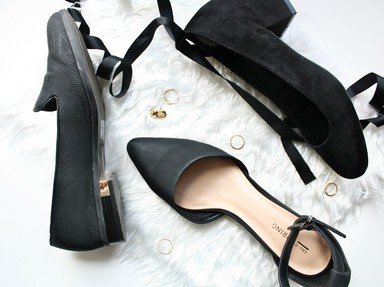Quiz Answer Key and Fun Facts
1. Most people have at least heard of Dr. Martens shoes and boots, a favorite of skinheads and grunge and punk rockers. But just who was Dr. Marten anyway?
2. In today's political discourse, we often hear people refer to their political opponents as "a bunch of jackbooted thugs". So how did this footwear acquire the name "jackboots"?
3. Derived from the medieval Dutch "klompen" and the French "sabot", this durable shoe protects the feet from farm implements and fishing hooks. At one time it was popular in northern Europe but now is normally worn only as part of a traditional dress. It has given its name to a form of dancing that is popular in the South of the U.S.
4. Their name of this footwear is a good example of onomatopoeia. In Japan they're called "zoris". In New Zealand they're called "jandals". Australians say they're "thongs" and in South Africa they're "plakkies". What do most people call them?
5. What is the most distinct characteristic of a pair of winklepickers? If you wish to know the answer, a genie may be able to help. And yes, there really is a shoe called a winklepicker.
6. The most famous predecessor of this type of shoe was the Zoccoli in the 15th century in Venice where it was useful in keeping the feet dry when the pavements were flooded, although it has been around since the time of the ancient Greeks. If you're the type of person who enjoys looking down on others, this is the style for you.
7. Characterized by having no back, in years past this shoe was a symbol of wealth since it had no practical value outside the home and indicated that the wearer owned at least two pairs of shoes back in the time when owning more than one pair of shoes was a luxury.
8. In the Basque region of Spain, this shoe is called espartina, based on the wiry Mediterranean grass esparto. The rest of us call them espadrilles. What is their defining characteristic?
9. These were quite the thing for the distinguished gentleman to wear in the late 19th and early 20th century. Worn over the top of the shoe, but under the trouser leg, they were composed of a stiff white fabric buttoned up the side and secured with an elastic band that went under the shoe. What were they called?
10. Up until the start of the 17th century, the most common shoe was one that was fastened with a strap or a buckle in the front. But in 1640 a new type of shoe was introduced - one that laced up in the front. It was quickly embraced by the students of a famous English university and is now known by that name. What university was this?
Source: Author
OldManJack
This quiz was reviewed by FunTrivia editor
kyleisalive before going online.
Any errors found in FunTrivia content are routinely corrected through our feedback system.
